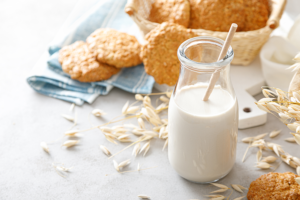It happens all the time—a pinch too much, a little slip of the mind, and a dish is suddenly too salty and seemingly beyond saving.
But does that have to be the case every time? Given the complexity of food science, there’s always a way of salvaging things. Understanding how to reduce saltiness in food or correct oversalting is invaluable in any context. Learning flavour balancing isn’t a difficult skill to master. Whether it’s a pot of stew or a batch of potato chips, we’ll guide you through some simple, effective methods of keeping foods edible, besides arming you with steps to avoid the problem in the first place.
Why is Your Food Too Salty?
Before rushing to save your dishes from being thrown away, it helps to know what causes oversalting. The obvious, of course, is adding too much salt. Whatever the reason, even the slightest miscalculation can quickly overwhelm a dish. When dealing with a complex dish with multiple ingredients and steps, salty elements like soy sauce and canned broth can accumulate and naturally contribute to high sodium levels. Meanwhile, reduction techniques like simmering gravies or soups for extended periods can concentrate salt in the dish. In some cases, using the wrong type of salt can make all the difference. Table salt, kosher salt, and Himalayan salt have their uses, and replacing one with another could yield undesirable results.
Ways to Neutralise Saltiness in a Dish
If one of the above mistakes is made, the following methods can aid chefs and even food manufacturers in fixing their creations with minimal fuss.
Dilution
Adding water to a liquid-based dish like bouillon or sambar dilutes the salt concentration and allows for the recalibration of taste. Bring the dish to a simmer and add suitable herbs and spices to regain the desired quantity and consistency while replacing any flavours lost.
Bulk Up the Ingredients
Sometimes, adding more ingredients listed in the recipe is helpful where possible. Throwing in vegetables and starch-rich ingredients that soak in salt balances the flavour and restores the dish. These ingredients, especially root vegetables, can also be cooked separately without any seasoning and then added to the original preparation. From pasta to noodles to carrots, several possible ingredients can work to neutralise saltiness in a dish this way. And extra servings, if any, can always be kept aside for refrigeration.
Use Sodium/Salt Reducers
These solutions primarily concern the prepared food industry, providing the desired saltiness while keeping sodium levels down. Salty taste is a huge selling point for packaged foods like namkeen and popcorn. As bad as it may be for the body, salt enhances food’s sensory appeal, and people are wired to enjoy it in moderation. But, it simultaneously raises health concerns that consumers increasingly want to avoid nowadays — sodium reducers give manufacturers convenience and address market demands directly.
Did you know Symega’s TastePro™ Sodium Reduction Tool is a natural solution that can cut sodium levels by up to 30% in snacks, noodles, and more—all while keeping the flavour just as delicious? The product’s advanced flavour technology produces a natural umami sensation that recreates salty sensations without actually using salt. Meet evolving customer needs for varied applications at scale through our scientifically validated product that’s already helped several businesses. Learn more here.
Use Potatoes
When in a bind, look no further than potatoes. Incorporate pieces of partially cooked or raw potatoes into oversalted stews and gravies, and they’ll probably take in some salt while the dish is left to simmer. The potatoes can remain as a way of bulking it up. Or they can be removed to stay true to the recipe’s essence. Is your food too salty? Adding potatoes in addition to dilution helps overcome excess salinity in liquid-heavy dishes, while the quantity is more or less unaffected as potatoes draw some liquid into them.
Mask with Acidity or Sweetness
A drizzle of lime or lemon juice when it comes to meats and fish, a dash of vinegar, or some tomatoes can easily recover oversalted dishes and let the flavours shine. Depending on the flavour profiles, different acidic components can neutralise saltiness in a dish and naturally blend with the dish. For example, distilled white vinegar and rice vinegar are versatile options that go with multiple dishes. In specific instances, apple cider vinegar can be used where sharp, fruity flavours are at play—in marinades and salads.
Similarly, a tiny bit of sugar can be just as effective. Carefully add brown sugar, white sugar, and sweeteners like honey until the desired flavour is achieved.
Creamy Ingredients
Creamy ingredients can spread the salt throughout the dish and lessen its impact on the palate. Reach for sour cream and fat-rich options like collard greens and avocado when your casseroles or pasta need their saltiness taken down a notch. And as a bonus, the dishes are left with a smooth finish. Knowing which ingredients pair with a particular dish can result in amazing creations—but there’s no reason to keep from improvising and experimenting in the kitchen if strict adherence to recipes isn’t necessary.
Think Dairy
Finally, in keeping with the theme of creamy ingredients, dairy products can disguise salinity by coating the taste buds and reducing the perceived taste of salt. A chunk of unsalted butter is a fantastic choice for dishes on a gentle cook, giving a nice, creamy finish. And if butter doesn’t seem ideal, substitute it with heavy cream. Go with fresh cheese if the dish is towards the end of its preparation, turning off the heat to prevent breakage. When in doubt, milk, even non-dairy types like almond and soy milk, is a safe choice for most dishes. (Note that some of these options might not be ideal for applications requiring light textures, as fat will increase density.)

Tips to Prevent Oversalting
While it’s possible to reduce salt or salty taste in food in several ways, it’s more effortless not to make food too salty to begin with.
Always Taste as You Cook
The most fundamental rule in cooking is the most straightforward answer to preventing extra-salty dishes. Tasting a dish frequently while cooking safeguards against the salt problem and does more than that. Sample dishes at various stages to adjust for any flavour imbalance and know if the salt levels are optimal. Also, tasting separate components, such as stocks, before incorporating them is good practice. And if the recipe calls for several salt-heavy ingredients like cured meats and pickles, hold off on any salt listed in the instructions until tasting at the end.
Season the Food with Salt Towards the End of the Cooking
Sometimes, even tasting carefully might not help, as it’s easy to add extra salt to gravy-based dishes and not feel the effects until it’s too late. Salt absorption in food will be slow when added throughout the cooking process, meaning it could be a while before all the saltiness kicks in at once. This is due to salt perception increasing as a gravy thickens. In this case, hold off on adding salt until later.
Use Unsalted or Low-Sodium Ingredients
Unsalted alternatives across categories like spreads and butter are slowly becoming available. Using these varieties instead of sticking to recipes rigidly can ensure products don’t run the risk of getting too salty. Going down this route is particularly recommended if the dish is to be finished with a pinch of salt. Many condiments are also packed with sodium. Replacing them with suitable substitutes offers health benefits while maintaining the dish’s integrity. For example, pick plain yoghurt or club soda instead of baking powder per the recipe and the flavour profiles.
Use Measuring Tools
Instead of mentally approximating what a teaspoon is and going well over it, be precise by using dry measuring cups and spoons. Going on a whim could work out unfavourably, especially when dealing with complex recipes or starting in the kitchen, so remember to measure salt as directed.
Use the Right Salt
The type of salt used has a bearing on a dish’s flavour. Firstly, salt density has a role in how salty a dish turns out, so accommodating this limits unnecessary saltiness. Next, granule texture varies from salt to salt, whether it’s the smoothness of table salt or the uniform coarseness of kosher salt, so it’s easy to overdo a ‘pinch’ of salt in some instances. All in all, keeping to the recipe and having a feel for the salt is the best way to ensure your masterpiece is plate-worthy.
The Takeaway

Between an extra jiggle of the salt shaker and an excess of salty ingredients, it’s easy to turn a dish too salty. But oversalting isn’t the end of the world. With quick fixes like adding water and potatoes for kitchen recipes, there are options within reach that can get the job done in no time. Other methods, like adding acidity and dairy products, can balance flavour by masking saltiness, sometimes even enhancing flavour profiles and giving dishes added depth. While these tips answer the question of how to reduce saltiness in food, the best practice is to prevent it from happening. Tasting while cooking, remembering to use low-sodium or unsalted ingredients, and measuring out salt can save plenty of trouble and guarantee a lip-smacking experience.
FAQs
Natural alternatives include citrus additions such as lemon and lime juice that brighten flavours, particularly in fish and poultry. Various types of vinegar can be used instead of salt, where the tanginess cuts through and sharpens other ingredients. Herbs, whether fresh or dried, can add pungency and depth, similar to salt. Among other choices are ginger, garlic, and spices like chilli.
Diluting gravy-based dishes with water or salt-free broth is typically the simplest way to deal with the issue. Right after, simmering the batches and adding herbs and spices will bring the amount to the desired level and consistency while replacing any flavours that may have been lost. Depending on the food, adding acidity (citric acid or vinegar) can help balance flavours and counteract the extra salt in your preparations. Adding spice blends containing sugar to savoury dishes in proportion can also help handle the problem of rectifying large quantities at once.
Salt, especially too much of it, can affect texture. Its hygroscopic nature means it absorbs atmospheric moisture, impacting how foods feel on the tongue. Salt further interacts with proteins in foods in various ways, commonly helping with binding, and additional amounts can lead to undesired results. Additionally, mechanical properties such as dough malleability in baked goods are impacted by salt content, which impacts texture.
Sugar can indeed rescue overly salty recipes. Adding a fraction of brown or white sugar, or even a sweetener like honey, in incremental portions until the flavour is balanced is usually recommended and an easily available solution.




